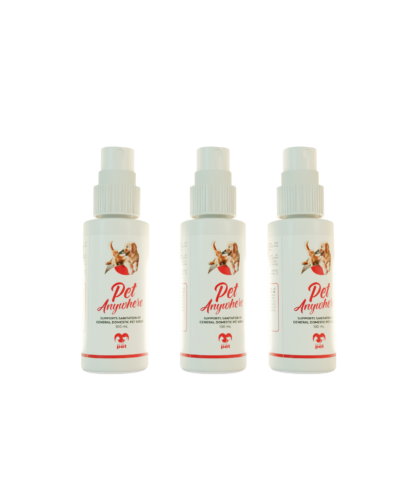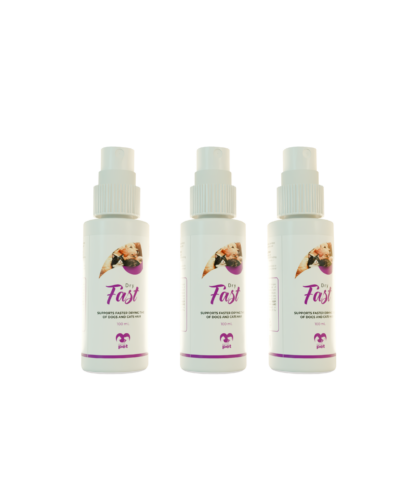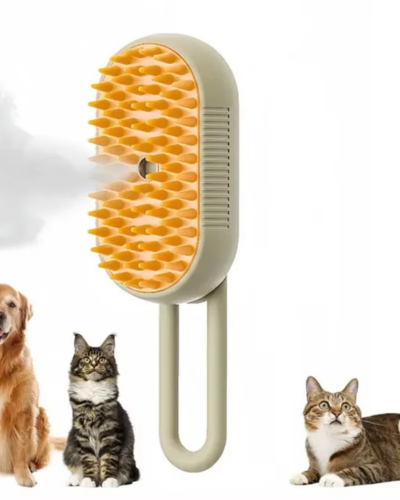Welcoming a new feline friend into your home is an exciting journey. As a new cat owner, understanding essential cat care tips is crucial for ensuring your furry companion’s health and happiness. Whether it’s about feeding, grooming, or recognising signs of illness, every detail counts. Let’s explore how you can provide the best care for your new cat, creating a nurturing environment that supports their well-being.
Understanding Your Cat’s Needs
Cats are known for their independent nature, yet they rely heavily on their human companions to understand and fulfill their needs. Identifying these requirements is crucial for providing a nurturing environment. Cats communicate their needs through a range of vocalisations, body language, and behavioural patterns. Observing these cues can help in deciphering whether they are hungry, feeling unwell, or require attention.
Nutrition is a pivotal aspect of a cat’s wellbeing. A balanced diet not only supports healthy growth but also enhances energy levels and overall health. For first-time owners, it’s essential to select a diet that matches their cat’s age, weight, and activity level.
Another important consideration is the living space. Cats need areas where they can play and rest. Providing your cat with ample toys and scratching posts helps satisfy their urge to scratch and play, keeping them physically active and mentally engaged.
Cats are creatures of habit, appreciating routines that mimic their natural behaviours. Maintaining a regular schedule for feeding, play, and grooming can provide them with a sense of security. Furthermore, pay attention to the type and amount of stimulation they receive. Introducing interactive toys or engaging them in hide and seek can keep them entertained.
Lastly, recognising your cat’s emotional needs is key to fostering a strong human-feline bond. Cats require a combination of independence and affectionate interaction. Allowing them to approach you on their terms and respecting their personal space can enhance trust and understanding.
Essential Cat Health Tips
Proper healthcare is vital in ensuring your cat leads a happy, thriving life. Regular visits to the vet are essential; these check-ups can catch potential issues early, making treatment easier and less stressful for your feline friend. Vaccinations are crucial in protecting your pet from common cat diseases like feline leukaemia or rabies.
Spaying or neutering is another step towards a healthy life for your cat. These procedures reduce the risk of various health problems, contribute to a calmer temperament, and help control the pet population. Regular parasite control is necessary to avoid fleas, ticks, and worms.
Nutritional health can directly affect your cat’s overall well-being. A balanced diet tailored to your cat’s age, weight, and health needs is critical. Avoid overfeeding to prevent obesity, a common problem in cats that can lead to further health complications.
Dental care is often overlooked but is a cornerstone of cat health. Without attention, dental issues can arise, leading to serious infections. Consider routine teeth cleaning and provide dental treats or toys to maintain oral hygiene.
Observing behaviour changes is a key indicator of health. Cats often hide injuries or illnesses, presenting subtle changes instead. Be alert for variations in appetite, litter box habits, or energy levels.
Feeding Your Cat Properly
Feeding your cat in the proper manner is essential to ensure their health and longevity. Cats are obligate carnivores, which means their diet should be rich in animal protein and low in carbohydrates. One of the key aspects of cat nutrition is providing the right balance of nutrients, including proteins, fats, vitamins, and minerals.
It’s crucial to choose high-quality commercial cat food that meets the nutritional standards set by animal health authorities. Avoid ingredients like corn, soy, and wheat, which offer little nutritional value to cats. Make sure the primary ingredient is a source of animal protein.
Cats require varying nutrition depending on their age, weight, and health. For kittens, select specially formulated foods that support growth and developmental needs. Adult cats need a maintenance diet to support their energy levels, while senior cats benefit from formulas tailored to their changing metabolism.
Portion control plays a vital role in maintaining your cat’s healthy weight. Overfeeding, even with the right food, can lead to obesity and associated health problems. Follow the feeding guidelines on the label, adapting as needed based on your cat’s activity level and overall condition.
Fresh and clean water access is as important as food, if not more. Cats can be prone to urinary tract issues, which are often exacerbated by dehydration. Encourage your cat to drink more water by regularly changing it or investing in a cat water fountain, which might attract them to drink more due to the running water.
Consider feeding your cat a mixture of wet and dry food. Wet food can help with hydration, as it contains more moisture, and is generally lower in calories. On the other hand, dry food can help keep their teeth clean. However, watch out for any digestive issues when combining different food types.
Regularly monitor your cat’s weight and health condition. If you notice any drastic changes in appetite, weight, or energy levels, it might be time to consult a vet for a tailored dietary plan. Proper nutrition is not only about sustaining life but enhancing quality and extending the precious time you share with your feline friend.
Creating a Safe Environment
Creating a safe environment for your feline friend is vital to ensuring their well-being and security. Cats are naturally curious creatures, exploring their surroundings with great zeal. Safeguarding your home is essential to prevent accidents or harm.
Secure hazardous areas: Begin by identifying and securing areas that could pose a danger to your cat. Keep cleaning chemicals, medications, and other hazardous substances in cabinets or containers that are cat-proof. Ensure that all windows and balconies are securely closed to prevent falls.
Electrical safety is crucial. Cover electrical wires and cords with protective casings or tuck them away to deter cats from chewing on them. This reduces the risk of electrical shocks or entanglement.
Cats love to climb, but not all heights are safe. Secure tall furniture to the wall to prevent it from toppling if your cat decides to scale it. Similarly, remove small items that could become choking hazards or be swallowed by an inquisitive cat.
Provide a Feline-Friendly Space
Designate a specific area for your cat to rest and play. Provide comfortable bedding in a quiet spot where your cat can retreat and feel safe. Offer scratching posts and interactive toys to keep them physically and mentally stimulated. Cats also enjoy perches, so having cat trees or ledges where they can observe their territory is beneficial.
Ensure that there are no dangling cords or objects that can be pulled down. Cats will paw at moving objects, so secure curtains or blinds with safety devices that keep cords out of reach.
Regularly assess your home from your cat’s perspective. Look for potential dangers at different levels and make necessary adjustments. By creating a safe environment, you’re contributing to a happy and healthy life for your new feline companion.
Grooming Tips for Cats
Keeping your feline friend well-groomed is vital not just for their appearance but also for their health. Cats are naturally clean animals, often engaging in self-grooming. However, this doesn’t mean they don’t need a helping hand from their humans.
Brushing – helps remove loose hair and reduces shedding. It also prevents hairballs, which can be a common issue for cats. Depending on whether your cat has short or long hair, you may need to brush them anything from once a week to daily. Make grooming a pleasant experience by being gentle and offering treats and praise.
Regular nail trimming is another essential grooming task. Overgrown claws can cause pain and affect your cat’s ability to walk properly. Carefully trim the claws while ensuring you don’t cut too close to the quick, which can be painful for them.
Ear and Eye Care – Cats’ ears should be checked regularly for wax, dirt, or any signs of infection. Use a damp cloth or a cotton ball to clean their ears gently. Avoid using cotton swabs, as they can push debris further into the ear canal. Eye care is also crucial. If you notice any discharge or dirt around their eyes, wipe it away with a damp cloth. Always be cautious to avoid getting anything into their eyes.
Bathing – Unlike dogs, cats do not require frequent baths. However, if necessary, use a cat-safe shampoo and ensure the water is warm. Avoid wetting their face, and focus on keeping the experience calm and stress-free for your cat.
Finally, always observe your cat’s skin and coat condition. A healthy coat is shiny and free from tangles or mats. Should you notice any bald patches, redness, or flakiness, it might be time to visit the vet for an expert opinion.
Recognising Signs of Illness
Cats can be quite adept at hiding their ailments, which is why it is crucial to recognise subtle signs of illness to ensure they receive timely care. Pay close attention to any changes in your cat’s regular habits, such as alterations in appetite or thirst. A sudden increase or decrease in eating or drinking can indicate an underlying health issue.
Monitor your cat’s litter box habits. Diarrhoea or constipation, as well as changes in urination frequency, colour, or odour, can provide vital clues about your cat’s health.
Observe their behaviour for unusual levels of lethargy or hyperactivity. A once playful cat that suddenly becomes sluggish or a calm cat that turns erratic might be experiencing discomfort or pain.
Check for physical signs such as discharge from the eyes or nose, increased sneezing or coughing, which may suggest respiratory issues.
Inspect for matted fur, excessive shedding, or irritated skin, as these might indicate dermatological problems or even stress. Additionally, keep an eye on unusual weight fluctuations, as weight loss or gain could signal an underlying health problem.
Another key indicator is your cat’s breath. Bad breath might not just be a dental issue; it can suggest a more systemic condition affecting organs like the kidneys.
Early detection is key in managing your cat’s well-being, so regular vet checkups are essential to catch potential illnesses before they become severe. Ensure to maintain an open dialogue with your vet about your cat’s health and any observations you’ve noted.
Building a Strong Bond with Your Cat
Creating a deep connection with your feline friend requires time, understanding, and effort. Start by spending quality time with your cat daily. This can be as simple as sitting together while you watch television or engaging in interactive play sessions with toys like feather wands or laser pointers. Such activities not only strengthen your bond but also cater to your cat’s mental and physical stimulation needs.
Understand that cats have their own personalities and preferences. Some cats enjoy affection and might sit on your lap or rub against you frequently. Others might prefer their own space. Respecting your cat’s personal space is crucial in building trust. Learn to read their body language; a twitching tail or flattened ears might indicate they need some alone time.
Communication is key when building a bond. Speak to your cat regularly. Even though they might not understand the words, they will become accustomed to your voice’s tone and rhythms. Positive reinforcement can also play a significant role. Reward your cat with treats or praise when they behave well or use litter boxes correctly. This encourages good behaviour and creates a sense of security and love.
Incorporate gentle petting into your daily routine. Most cats enjoy being petted under the chin or behind the ears. However, always be attentive to their response. If your cat moves away or shows signs of discomfort, give them space.
Finally, ensure that your home environment is conducive to your cat’s comfort. Provide them with a safe haven in the form of a cosy bed or a quiet room where they can retreat. Access to windows, where they can watch the outside world, is often hugely appreciated by our feline companions. Toys, scratch posts, and climbing structures can enhance their living space, keeping them entertained and active.
By fostering an environment of trust and comfort, you’ll create a lasting and meaningful bond with your cat.
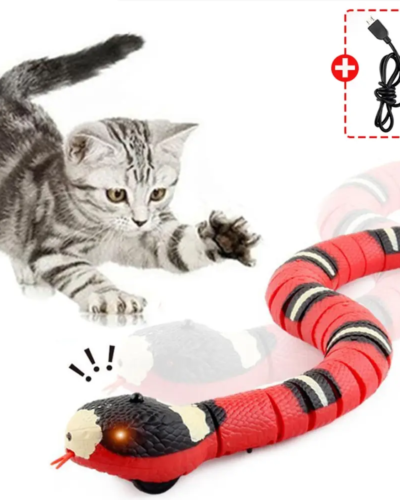 Smart Sensing Interactive Snake Cat Toy
1 × 15.98 £
Smart Sensing Interactive Snake Cat Toy
1 × 15.98 £  Rechargeable Motion-Activated Cat/Dog Laser Toy
1 × 18.66 £
Rechargeable Motion-Activated Cat/Dog Laser Toy
1 × 18.66 £ 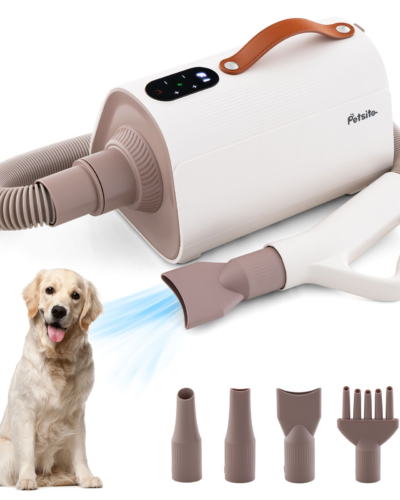 Pet Hair Dryer with Negative Ion Technology
2 × 84.37 £
Pet Hair Dryer with Negative Ion Technology
2 × 84.37 £ 







